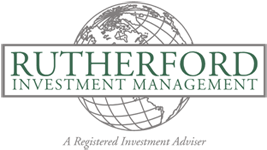Published January 14, 2019

First and foremost is the tariff war. Although initiated earlier, the tariff war came home to roost in the fourth quarter of 2018, when tariffs began to have their full impact. Once billed “easy to win” by the president, the tariff war is proving anything but easy. As the impact of the trade war on the global economy became visible and economies began to slow, the prices of equities and commodities fell in concert. Money began to flow from these assets, and markets tumbled.
Then the Federal Reserve made good on its promise to raise interest rates. Chairman Powell promised to raise rates until the Fed charts showed that rates were in the “right place.”
And so, beginning in early September, equity markets tumbled into bear market territory, down about 20 percent. The markets went from optimism to pessimism in a matter of weeks. The yield curve suggested a recession was in the offing. Having predicted 13 recessions – and eight happening – the yield curve frightened investors. Retail investors bailed out in fear. Institutional investors, by and large, held their ground. Volatility went to extremes, with the Dow stocks plummeting nearly 800 points one day and jumping 1,000 points another day.
Fundamentals remained strong, but with the cloud of dubious leadership, confidence was shaken. With the “full faith and credit of the United States” in doubt, investors ran for cover.
Added to these factors were Brexit, riots in the streets of France, Italian budget problems and a dysfunctional European Union. Other nations began to follow the America first model; alliances began to splinter.
The market in December suffered its greatest monthly decline since the Great Depression. President Trump called it “a little glitch.”
The government was shut down over a dispute on appropriations to build a wall along the Mexican border.
But as often happens, when things become too bad, saner heads prevail. The Federal Reserve began to backtrack. Chairman Powell walked back his earlier strident comments that suggested the Fed was on autopilot. He suggested more flexibility in rate increases. His actions gave the markets breathing room, and they surged.
President Trump, feeling the market heat, began to soften his tone on tariffs. Trade talks restarted. The markets took encouragement.
The S&P climbed nearly 8 percent in seven days. The 19.9 percent drop was reminiscent of 1990, when the S&P plunged 19.9 percent in three months only to erase all the losses four months later. In 1998 the market took a similar drop in a matter of weeks only to recover in two months.
More market lows could happen, but follow the fundamentals and not the headlines. For instance, the January jobs report came in very strong and the economy seems on solid footing. So, the series of policy mistakes appear to be over for now, at least until the next missteps. Shaky leadership wrong-footed the markets. This may repeat, but hopefully some lessons were learned. No assurances given.
William Rutherford is the founder and portfolio manager of Portland-based Rutherford Investment Management. Contact him at 888-755-6546 or wrutherford@rutherfordinvestment.com. Information herein is from sources believed to be reliable, but accuracy and completeness cannot be guaranteed. Investment involves risk and may result in losses.
